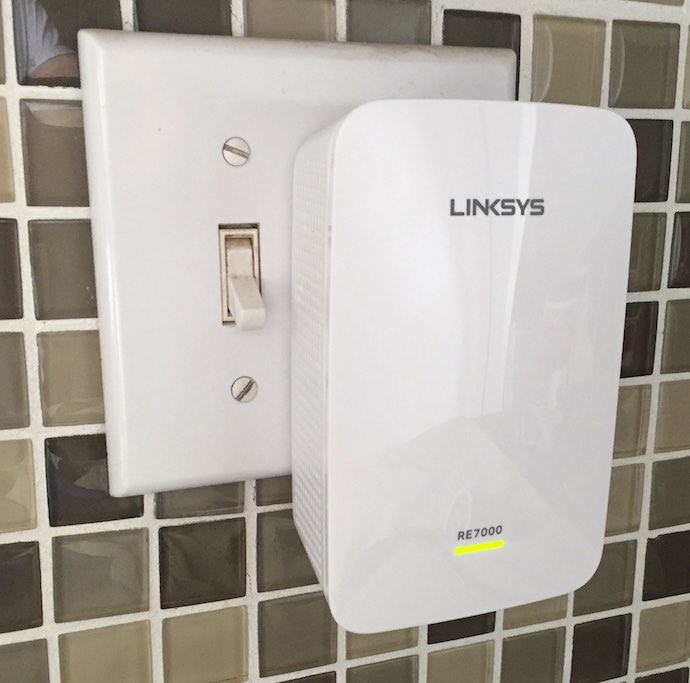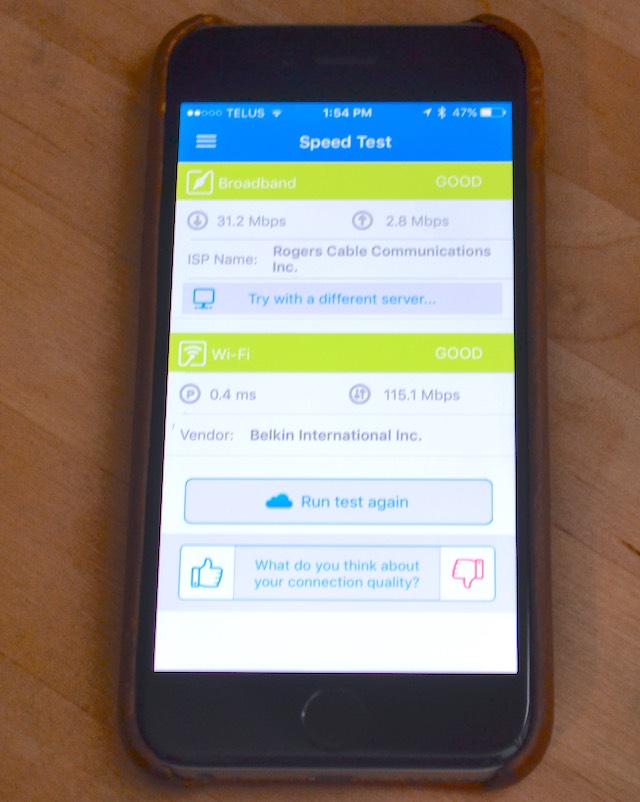
How My Wi-Fi Went From Dependable to Deplorable
I was a relatively early adopter of 802.11ac, a move I felt was necessary given the relatively high load of connected technology in my house. I spend all day working with gear like smart devices, PCs, Wi-Fi speakers and the like. An early adopter of video streaming, I’ve added five Apple TVs to our network since buying my first in 2007. I also have three teenagers, all of whom are into gaming. So that’s three different video game consoles (have to cover all the platforms), plus assorted handhelds. Then there are the usual smartphones and tablets in the mix.
Clearly, it was time to move from 802.11n, so a few years ago I upgraded our network with an Apple Airport Extreme 802.11ac router. And things have been pretty solid ever since. There are still some areas of the house where coverage could be better but we had a few good years.
Then, I suddenly began pulling out what’s left of my hair over the horrific state of our Wi-Fi. The wireless router was fine, so what had changed?
The beginning of the end was when the kids wore me down and I sprung for the Netflix premium plan. Suddenly there could be four HD video streams going simultaneously, with the possibility that someone might also fire up an Apple TV and stream HD content over Wi-Fi from the iTunes server. With Xbox live being used at the same time, and sometimes FaceTime chats too (teenagers are multi-taskers).
This constant demand took a toll on that early 802.11ac router, which maxes out at 1300 Mbps.
But the real killer—at least for me—was when I moved into my new office. For years I had worked out of the basement and that was always pretty close to the Wi-Fi router. At worst, there was a floor between it and my computers.
The new location is great, but it is physically as far from the router location as you can get in my house, and I installed a glass door. great for letting in light while keeping out noise while I’m working, but glass is a killer with Wi-Fi signals.
This summer, with the three kids at home and their friends often over here (the work-from-home parent always “wins” that one), Wi-Fi performance in my office has been abysmal. To the point where web pages load slowly and Apple Music constantly drops.
Linksys EA7500
Fortunately, I had the opportunity to test out a Linksys EA 7500 router for some relief. Ted Kritsonis already did a detailed review of this model (you can read it here), so I’m not going to get into it very deep.
Suffice it to say, that as a next-generation 802.11ac router, it has significantly improved specs compared to my old router, including three simultaneous data streams, three external antennas and up to 1900 Mbps in data throughput. It also offers granular control like traffic prioritization that my Apple router lacks.
In short, the new router should provide the firepower to handle the demands on my Wi-Fi network and more importantly (at least to me), it should put an end to my summer of pokey office Wi-Fi misery.
And it was an improvement, but not a dramatic improvement. So what gives?
House Layout Challenges Wi-Fi
Our house is a side split, so there are four levels. The cable access point is in the basement at one end, and my office is on the upper floor at the exact opposite end.
Central positioning is key to Wi-Fi router performance but unfortunately, the middle of my house (lengthwise) is walls and stairs. I have run Ethernet cable so the router is positioned roughly in the middle vertically, and it’s in the open not stuffed in cabinet, but it’s still stuck at one end of the house.
And between my office and the router are obstacles including a brick fireplace, load-bearing walls, stairs and that glass door. Far from ideal…
Enter the Range Extender

What turned out to be the solution to the problem was another Linksys product I happened to have been sent, the Max-Stream AC1900+ Wi-Fi Range Extender.
It’s a relatively small white device that plugs directly into an electrical outlet. Setup was simple, all I had to do was press the WPS button on the EA7500 router, then press the button on the Max-Stream and wait for them to connect. Then a second time to connect the 5GHz radios.
At that point, the basic setup was done, and all that was left to do was to move the Max-Stream extender to various electrical outlets throughout the house, looking for the sweet spot where it would boost the Wi-Fi signal to the far side of the house.
 Testing Wi-Fi Speeds
Testing Wi-Fi Speeds
Poor Wi-Fi reception doesn’t just mean the local network speed suffers (which hits me when streaming content from the iTunes server), but it can also negatively impact internet speeds as well. I ran a test from my office to check the Wi-Fi speed and the internet speed of the various configurations.
My original setup with the Airport Extreme returned average Wi-Fi speeds of around 22 Mbps, with my broadband internet averaging 20 Mbps. Considering my broadband connection speed is supposed to be 40 Mbps, the slow Wi-Fi was likely preventing full internet connection speed.
Next, I swapped out the Airport Extreme for the more powerful Linksys EA 7500. There was a definite improvement, with Wi-Fi and Broadband both averaging about 29 Mbps. However, the increase wasn’t dramatic and with the values so close, it again seemed likely that slow Wi-Fi reception was still dragging my internet connection.
Finally, I plugged the Max-Stream AC1900+ Wi-Fi Range Extender into an outlet between my office and the router. It still wasn’t an ideal location (it’s tough to find a free outlet that’s in a perfect spot), but the with the range extender the Wi-Fi speed in my office saw a big increase, to 115 Mbps, while my internet connection topped 31 Mbps.
Those speeds are still far from lightning fast, but they are a considerable improvement and they represent the performance in the worst and most challenging Wi-Fi dead zone of my house. Upgrading the router to a newer, more power 802.11ac model and supplementing that with a range extender made for considerably faster and more responsive Wi-Fi throughout the rest of the house. Good enough that I’m really not looking forward to having to box these review units back up …



